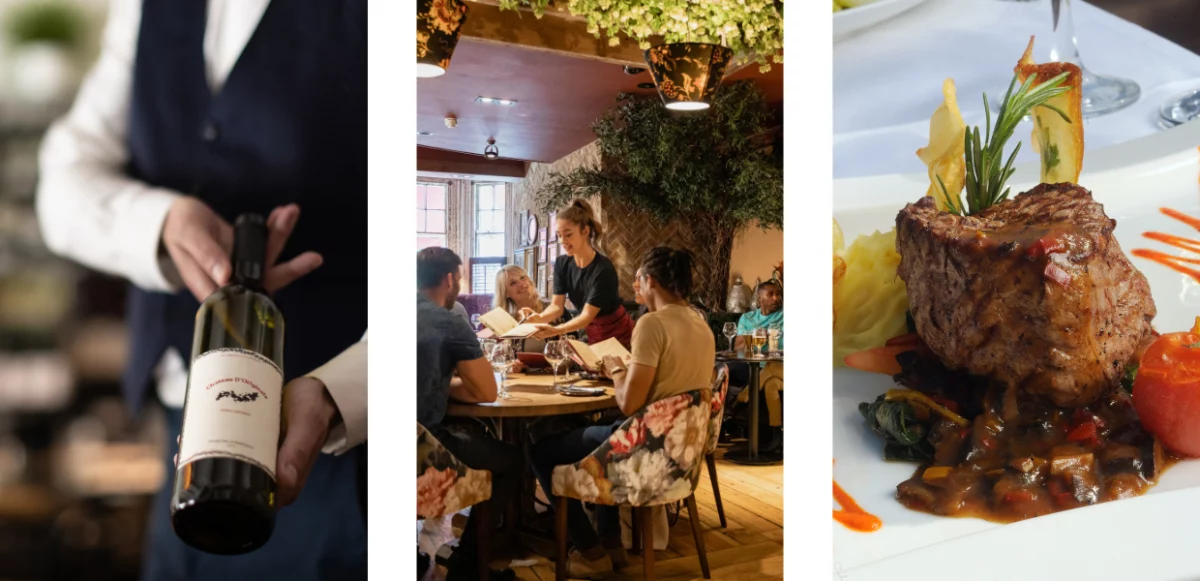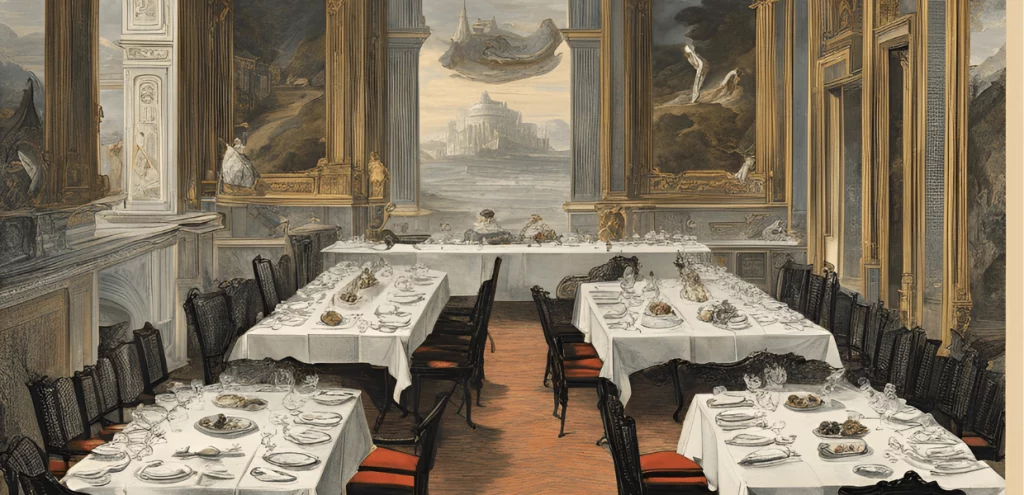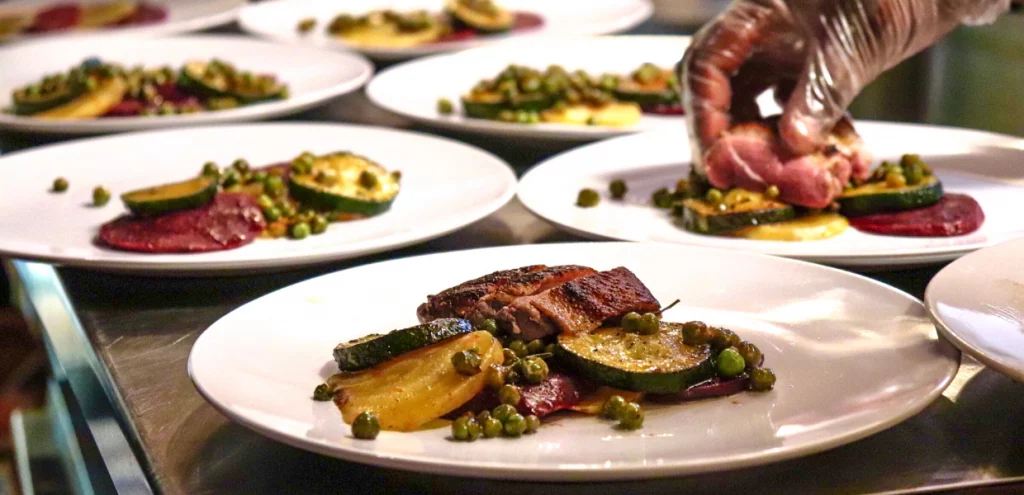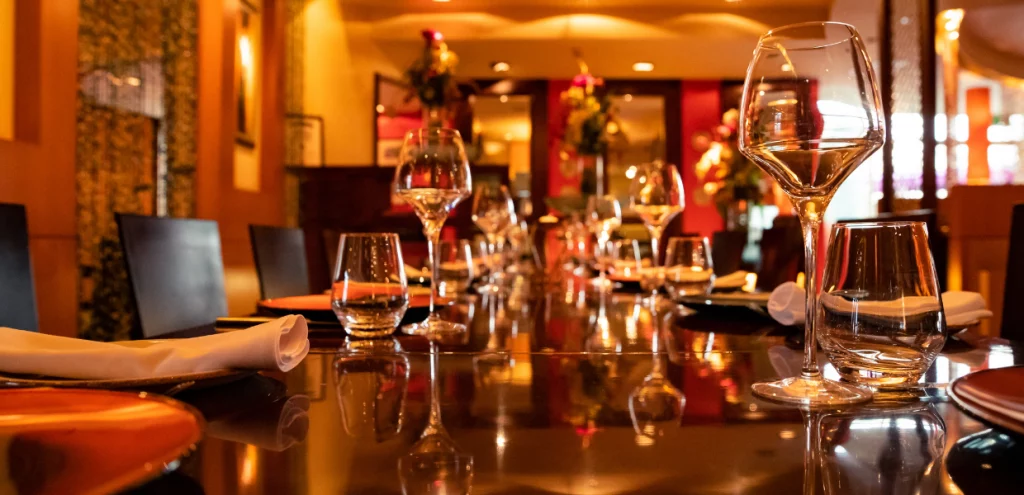All Articles
What Is a Fine-Dining Restaurant

Fine-dining establishments are arguably among the most renowned when considering various types of restaurants. In people’s minds, a fine-dining restaurant is often associated with excellence, etiquette, and luxury—evoking images of the highest standards and exceptional experiences. However, many aspects of these establishments remain less understood. Whether you’re looking to open a fine-dining restaurant or are simply curious about the concept, this article will provide a comprehensive overview, including the definition of fine dining, a brief history of its origins, key characteristics, and essential restaurant technologies used in this restaurant.
How Is a Fine-Dining Restaurant Defined
A fine-dining restaurant is more than just an upscale meal; it provides a luxurious culinary experience. Here, dishes are sophisticated and of superior quality, served in a refined and elegant setting. This experience is characterized by meticulous attention to detail in food preparation and presentation and exceptional service from attentive and professional staff. Fine dining also involves strict adherence to dress codes by both staff and patrons, enhancing the unique and memorable experience for guests.
Fine-Dining Restaurants History

The origins of fine dining can be traced back to 1780s Paris. The Grand Hotel of Monte Carlo, established through a collaboration between Swiss developer César Ritz and renowned French chef Auguste Escoffier, was the first to offer patrons a truly luxurious dining experience. This pioneering venture is considered the precursor to modern fine-dining restaurants.
A century later, fine dining made its way to the United States, with Delmonico’s in New York City leading the charge as the first restaurant of its kind. Both in Europe and the United States, these early fine-dining establishments were guided by the principles of haute cuisine, characterized by meticulous food preparation, elaborate presentation, and the use of the highest-quality ingredients.
Today, fine-dining restaurants can be found in nearly every major city, particularly in Europe and the United States. Those seeking to celebrate special occasions or enjoy exquisite dishes now have many options.
Characteristics of a Fine-Dining Restaurant
Of course, a fine-dining restaurant is characterized by more than just expense and luxury. While some characteristics are immediately apparent, others require a closer examination. Below, I outline the main features that define a fine-dining establishment.
Expensiveness
As anticipated before, the first and most well-known characteristic of a fine-dining restaurant is its upscale and luxurious ambiance. This type of restaurant provides an expensive dining experience. As its menu is not everyday fare but rather designed for special occasions and holidays, a fine-dining restaurant stays profitable by setting high prices.
Menu

A fine-dining restaurant’s menu is characterized by creativity, with each dish reflecting the chef’s sophistication and creativity, qualitative ingredients, and artistic presentation. Regarding the types of menus people can find in such a restaurant, here are the most common ones.
- Prix Fixe Menu: This menu type offers pre-set options for each course, allowing customers to choose from curated selections.
- A la Carte Menu: This menu type allows customers to individually select menu items and sides to complement the main course.
Typically, the menu is multi-course, so it consists of the following:
- Appetizers – They stimulate the diner’s appetite and set the culinary tone for the rest of the meal. Some appetizer ideas include a charcuterie board, smoked salmon bruschetta, oysters Rockefeller, truffled macaroni and cheese, or prosciutto-wrapped figs.
- Soups and Salads – They offer menu diversity and a lighter option for customers who prefer them before the main course. Some ideas for soups and salads could be Caesar salad with grilled prawns, roasted beetroot and avocado salad, French onion soup, or butternut squash bisque.
- Main Course – It is the culmination of the culinary experience, offering a sophisticated combination of expertly cooked and artistically presented ingredients. It aims to satisfy high expectations by using fresh, high-quality ingredients and showcasing complex and innovative cooking techniques that reflect the restaurant’s distinctive theme.
- Desserts – They are typically served at the end of the meal to contrast with the preceding courses. Some dessert options on a fine-dining menu include crème brûlée, dark chocolate mousse cake, and tiramisu parfait.
- Beverages – These are a vital component of the menu. The selection of beverages is carefully chosen to complement the rest of the items on the menu, providing a well-balanced culinary experience.
Service
Full-table service and formality provide a framework for discussing service in a fine-dining establishment. The waiter is expected to give each table special attention, creating a personalized experience for each patron. This experience includes a well-trained staff capable of maintaining a higher waiter-to-table ratio and answering various questions, including those about dish ingredients and wine pairings, among others. Typically, a fine-dining restaurant has a larger waitstaff compared to other types of restaurants due to the need for waiters to be highly responsive to patrons’ demands.
Fine-dining restaurants are the most formal dining establishments, adhering to specific service rules. Here are some guidelines for the three different moments of dining in a restaurant:
- Before the Meal
- Greet all guests warmly and formally upon arrival; use phrases like “Good evening, sir” instead of casual greetings.
- Ensure tablecloths are spotless and perfectly aligned.
- Arrange flatware and silverware from the outside in, starting with the first course.
- Remove any cutlery, plates, and napkins from empty seats.
- The Meal
- Servers remove used plates and silverware at the end of each course.
- Glasses and silverware should be held by the base to prevent fingerprint marks.
- Servers should take plates from the nearest point, avoiding reaching over guests.
- After the Meal
- Servers bring dessert and drink menus before presenting the check if the meal is not prix fixe.
- Plates are cleared only when everyone in the party has finished the course.
- To minimize noise, servers stack plates one at a time off the table when clearing.
Ambiance and Atmosphere

Fine-dining restaurants are known for their elegant, luxurious ambiance and intimate setting. This atmosphere is created through various elements, such as the strategic arrangement of tables to ensure both privacy and luxury, the use of silver cutlery, high-quality tableware, and specific glassware for each type of drink.
Decor plays a crucial role in setting the mood, often featuring expensive furniture, artwork, and exotic decorative plants. Additionally, softly played classical music and subdued lighting contribute significantly to the refined ambiance of a fine dining restaurant.
Exclusive Experience
Fine-dining restaurants typically operate on a reservation-only basis. Some require reservations to be made several days in advance, while others accept same-day reservations, depending on availability. The primary reasons for this policy are the limited number of tables, which ensures an intimate dining experience, and the extended time guests spend enjoying a leisurely paced, multi-course menu.
The exclusiveness of the experience is heightened by the fact that this type of restaurant is designed to offer patrons a sense of privacy and by the requirement that both staff and guests wear special attire. Additionally, guests are expected to observe a level of civility, exhibit good manners, and maintain a quiet demeanor.
Size
Another notable characteristic of fine-dining restaurants is their smaller size compared to other types of restaurants. This smaller size helps maintain an intimate and exclusive atmosphere, allowing for personalized service and attention to detail.
Staff
The staff at a fine dining restaurant is exceptionally skilled and specialized, with each member bringing deep expertise to their role. This level of specialization ensures that both food quality and service standards are elevated to the highest levels. The team typically includes positions such as Maître d’hôtel, Sommelier, Chef de Cuisine, Sous Chef, Chef de Partie, Commis Chef, Waiter, Bartender, Busser/Runner, and Host/Hostess. Staff members pay meticulous attention to every detail, from remembering customer preferences to offering personalized recommendations. This dedication guarantees an exceptional dining experience and helps create the refined and elegant atmosphere that defines fine dining.
Essential Technologies for a Fine-Dining Restaurant

There are many restaurant technologies, but because fine-dining restaurants value interaction between diners and waiters, technologies that aim to reduce this are not popular among them. So, you won’t find self-ordering kiosks or delivery options in a fine-dining restaurant. However, there are technologies essential to the efficient operation of this type of restaurant and a few other technologies that are starting to become popular for on-premises ordering.
- Point of Sale (POS) Systems – These systems, installed at the counter, are essential for staff to take and manage orders efficiently. They ensure order accuracy and when connected to a Kitchen Display System (KDS), streamline the process of sending orders directly to the kitchen for preparation. Additionally, POS systems integrated with payment processors facilitate convenient card payments, enhancing the overall customer experience.
- Kitchen Display Systems (KDS) – As mentioned earlier, kitchen display systems (KDS) are invaluable to back-of-house staff. They allow them to see what food needs to be prepared and to notify front-of-house staff when an order is ready. Orders placed at the POS are sent instantly to the KDS, ensuring efficient and accurate communication between the kitchen and the front-of-house.
- Online Ordering Systems – While fine-dining restaurants do not offer delivery – a primary feature of these systems – some use them for catering and takeout orders. Additionally, systems like TapTasty provide options for making reservations through a mobile app or website module.
- Gift Cards – This marketing technology usually comes with point-of-sale or online ordering systems.
- QR Table Ordering – Although fine-dining restaurants emphasize direct interaction between waitstaff and diners, some adopted QR code table ordering, particularly during the COVID-19 pandemic. In this way, both ordering and payment are removed from the direct interaction between waitstaff and diners.
- Reports – Similar to gift cards, reports are integrated with POS or online ordering systems. These reports help restaurants track various aspects of their operations, such as sales, the most popular dishes, and other key metrics.
- Inventory Management Systems – Fine-dining restaurants use inventory management systems to efficiently track and manage their stock of ingredients, beverages, and other supplies. These systems help ensure the restaurant maintains optimal inventory levels, reduces waste, and supports menu planning and cost control. By accurately monitoring inventory, fine-dining establishments can maintain high standards of quality and service.
Conclusion
A fine-dining restaurant offers more than just upscale food; it provides a complete dining experience characterized by attentive and personalized service, strict rules for both patrons and staff, a luxurious ambiance, and an unwavering commitment to quality and excellence.
If this article has helped you discover new helpful information about fine-dining restaurants, do not hesitate to share it with your friends.
 30 July 2024
30 July 2024 6 min read
6 min read

